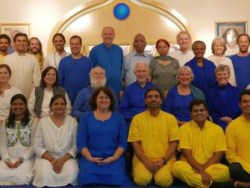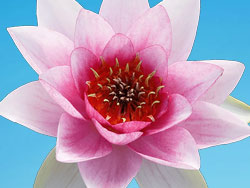FOR THE FIRST TIME RESEARCHERS COULD FIND A NEUROPHYSIOLOGICAL LINK BETWEEN OUR BREATHING PATTERN AND MENTAL RESPONSE.
Traditional Indian teachings of yoga have highlighted the mind-breath connection time and again. But sceptics were always asking for a scientific proof of such relationship. Some of the scientific studies in recent times have confirmed the role of breath in regulating our mental outlook. One such study was done at Trinity College of Dublin where scientists were exploring the neurophysiological link between breathing and attention. Researchers found for the first time that pattern of breathing had a direct effect on the levels of natural chemical messenger in our brain called Nor-adrenaline.
Lead author Michael Melnychuk explained: “Practitioners of yoga have claimed for some 2,500 years, that respiration influences the mind. In our study, we looked for a neurophysiological link that could help explain these claims by measuring breathing, reaction time, and brain activity in a small area in the brain stem called the locus coeruleus, where nor adrenaline is made. Nor adrenaline is an all-purpose action system in the brain. When we are stressed we produce too much nor-adrenaline and we can’t focus. When we feel sluggish, we produce too little and again, we can’t focus. There is a sweet spot of nor-adrenaline in which our emotions, thinking and memory are much clearer.”
 “This study has shown that as you breathe in locus coeruleus activity is increasing slightly, and as you breathe out it decreases. Put simply this means that our attention is influenced by our breath and that it rises and falls with the cycle of respiration. It is possible that by focusing on and regulating your breathing you can optimise your attention level and likewise, by focusing on your attention level, your breathing becomes more synchronised.” The study has been published in the journal Psychophysiology.
“This study has shown that as you breathe in locus coeruleus activity is increasing slightly, and as you breathe out it decreases. Put simply this means that our attention is influenced by our breath and that it rises and falls with the cycle of respiration. It is possible that by focusing on and regulating your breathing you can optimise your attention level and likewise, by focusing on your attention level, your breathing becomes more synchronised.” The study has been published in the journal Psychophysiology.
Yoga Science is Based on Mind-Breath Connection
You must have noticed that your breath varies in response to your mental equilibrium for instance our breath becomes erratic when we are angry or fearful. At the same time our breath becomes very calm or often still when we are deeply concentrating like while putting a thread through the eye of the needle. Indian yogis always knew about this connection and they devised some techniques to regulate the breathing pattern to bring a calming effect on mind. These techniques are popularly known as Pranayama. In fact the whole science of yoga is based on the mind-breath connection. Following are some simple breath practices that we can do and experience to experience a tranquil and uplifted mind.
A. Dirgh-Pranayama (Full Yogic Breath)
This is one of the easiest pranayamas to do, nevertheless it gives profound benefits. To do this pranayama while standing, start bending forward slowly on your hips exhaling completely as you go down to empty your lungs of all air. You may bend your knees slightly for comfort and take your hands as close to the feet as is comfortable without unduly straining your back. After going down, slowly you start coming up, inhaling first into the lower part of your lungs, allowing the abdomen to freely expand in the process, and then as you come up further you inhale into the middle and finally the upper portions of your lungs and raise your arms above your head. You may repeat the cycle five to six times for greater benefit. This pranayama helps us to learn diaphragmatic breathing.
B. Nadi-Shodhan-Pranayama (Alternate Nostril Breathing)
Close your right nostril with the thumb of right hand and start inhaling slowly from the left nostril to a mental count of 4-6, then close your left nostril with little and ring finger of the same hand and start breathing out from the right nostril to the same number of counts. Now, breathe in through right nostril to the same number of counts, close the right nostril with the thumb again and breathe out from the left nostril. This completes one cycle of alternate nostril breathing. It is advisable to do three cycles of this pranayma in the beginning about 3-5 times in a day. Studies have shown that this breath practice has benefited patients of heart diseases, high blood pressure, depression and insomnia. It is one of the simplest pranayama in yoga literature and if done with awareness can bring equanimity to mind and joy.
If you are interested in learning and experiencing more about pranayamas, you could do so at the nearest Ananda Sangha Meditation Center.
Author of this article is a Physician, Researcher and Lifestyle Educator, Yoga and Meditation Teacher from Ananda Sangha, Faculty at SKN Medical College, Pune
















